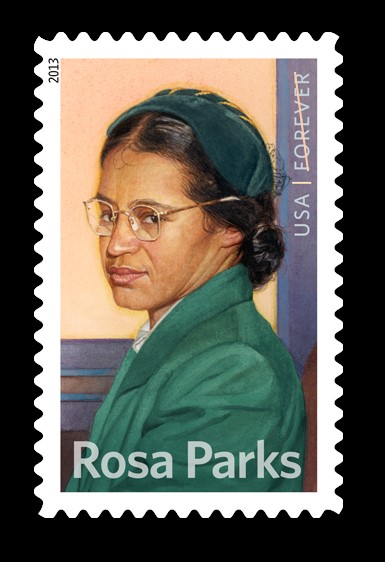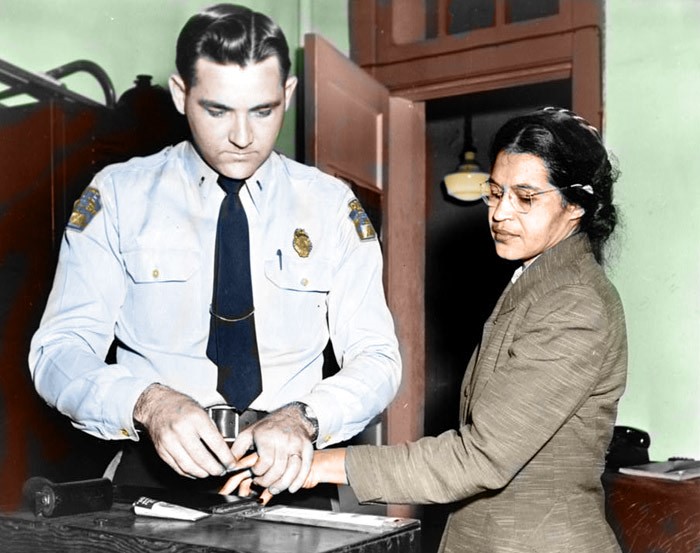

Rosa Parks was born on February 4, 1913. She was an African American civil rights activist and “catalyst” for the 2nd Civil Rights Movement known as the Montgomery Bus Boycott.
Rosa McCauley grew up in Montgomery, Alabama and attended the all-Black Alabama State College. Rosa and her husband Raymond Parks were active in Montgomery’s chapter of the NAACP. She worked as the chapter’s youth adviser; on voter registration drives and was secretary of the NAACP’s Montgomery branch in 1943. As the 1950’s began, the segregated seating policies on public buses were growing as a source of resentment and bitterness within the Black community in Montgomery.
Blacks were required to pay their fares at the front of the bus, and then board again through the back door. The white bus drivers would harass Blacks, sometimes driving away before they were able to get back on the bus. On December 1, 1955, Parks took her seat in the front of the “colored section”. When the driver asked Parks and three other Black riders to give up their seats to whites, Parks refused and was arrested; she soon agreed to let the NAACP provide legal council. Rosa Parks’ case was filed in United States District Court, which ruled in her favor, declaring segregated seating on buses unconstitutional, a decision later upheld by the U.S. Supreme Court.
Rosa Louise McCauley Parks was more than an inadvertent symbol; she was an experienced activist with strong beliefs. whose arrest for refusing to give up her seat on a bus set in motion the turning point in the African-American battle for civil rights. Parks and her husband relocated to Detroit in 1957, where in time, Congressman John Conyers hired her as an administrative assistant, a position she held until 1987. Her husband died of throat cancer on August 19, 1977 and her brother, her only sibling, died of cancer that November. Her personal ordeals caused her to become removed from the civil rights movement. She learned from a newspaper of the death of Fannie Lou Hamer, once a close friend. Parks suffered two broken bones in a fall on an icy sidewalk, an injury which caused considerable and recurring pain. She decided to move with her mother into an apartment for senior citizens. There she nursed her mother Leona through the final stages of cancer and geriatric dementia until she died in 1979 at the age of 92.
In 1980 Parks, widowed and without immediate family, rededicated herself to civil rights and educational organizations. She co-founded the Rosa L. Parks Scholarship Foundation for college-bound high school seniors, to which she donated most of her speaker fees. In February 1987 she co-founded, with Elaine Eason Steele, the Rosa and Raymond Parks Institute for Self Development, an institute that runs the “Pathways to Freedom” bus tours which introduce young people to important civil rights and Underground Railroad sites throughout the country. Though her health declined as she entered her seventies, Parks continued to make many appearances and devoted considerable energy to these causes.
A USPS stamp was issued with her image in 2013. Parks received national recognition, including the NAACP’s 1979 Spingarn Medal, the Presidential Medal of Freedom, the Congressional Gold Medal, and a posthumous statue in the United States Capitol’s National Statuary Hall. Upon her death on October 24 in 2005, on October 30th and 31st, she was the first woman and second non-U.S. government official to lie in honor at the Capitol Rotunda. By voice vote the House agreed to the action “so that the citizens of the United States may pay their last respects to this great American.”
